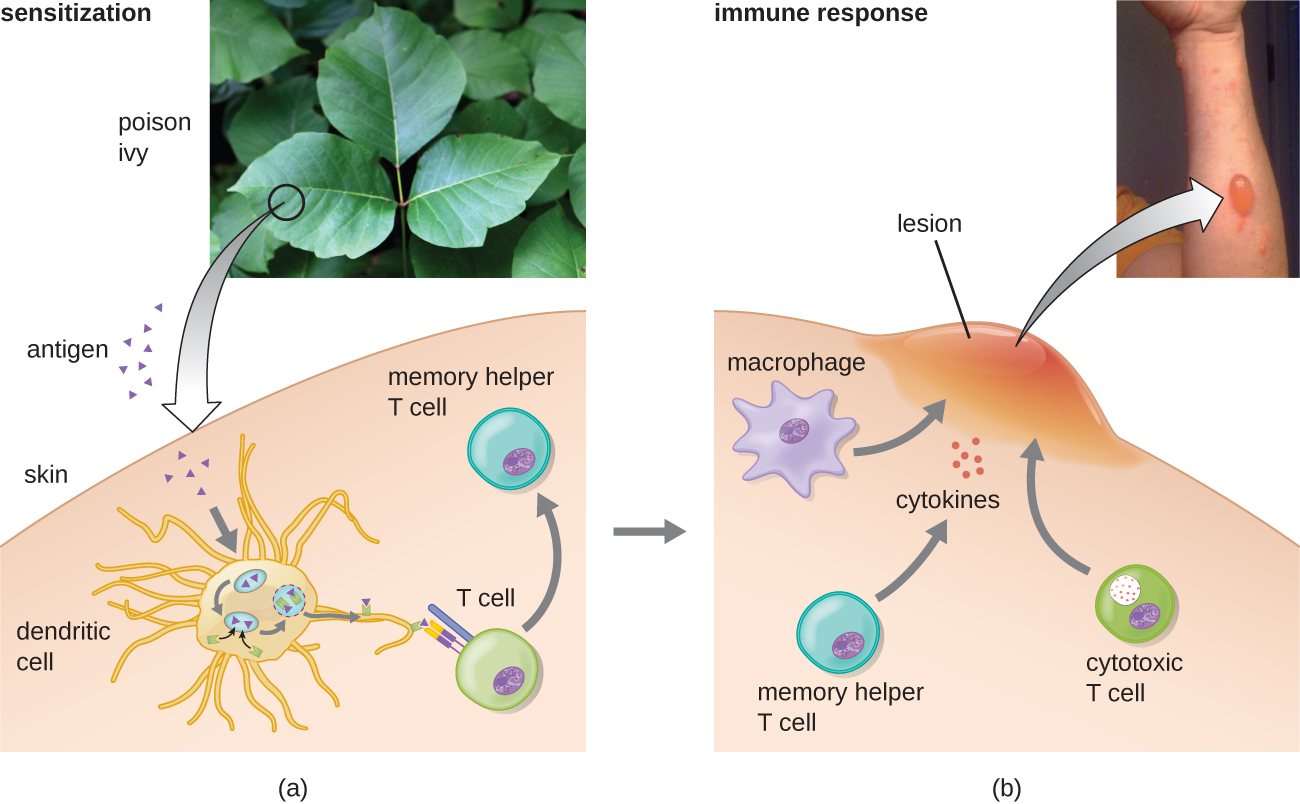| << Chapter < Page | Chapter >> Page > |
Type IV hypersensitivities are not mediated by antibodies like the other three types of hypersensitivities. Rather, type IV hypersensitivities are regulated by T cells and involve the action of effector cells. These types of hypersensitivities can be organized into three subcategories based on T-cell subtype, type of antigen, and the resulting effector mechanism ( [link] ).
In the first type IV subcategory, CD4 T H 1-mediated reactions are described as delayed-type hypersensitivities (DTH) . The sensitization step involves the introduction of antigen into the skin and phagocytosis by local antigen presenting cells (APCs) . The APCs activate helper T cells, stimulating clonal proliferation and differentiation into memory T H 1 cells. Upon subsequent exposure to the antigen, these sensitized memory T H 1 cells release cytokines that activate macrophages, and activated macrophages are responsible for much of the tissue damage. Examples of this T H 1-mediated hypersensitivity are observed in tuberculin the Mantoux skin test and contact dermatitis , such as occurs in latex allergy reactions.
In the second type IV subcategory, CD4 T H 2-mediated reactions result in chronic asthma or chronic allergic rhinitis . In these cases, the soluble antigen is first inhaled, resulting in eosinophil recruitment and activation with the release of cytokines and inflammatory mediators.
In the third type IV subcategory, CD8 cytotoxic T lymphocyte (CTL)-mediated reactions are associated with tissue transplant rejection and contact dermatitis ( [link] ). For this form of cell-mediated hypersensitivity, APCs process and present the antigen with MHC I to naïve CD8 T cells. When these naïve CD8 T cells are activated, they proliferate and differentiate into CTLs. Activated T H 1 cells can also enhance the activation of the CTLs. The activated CTLs then target and induce granzyme -mediated apoptosis in cells presenting the same antigen with MHC I. These target cells could be “self” cells that have absorbed the foreign antigen (such as with contact dermatitis due to poison ivy), or they could be transplanted tissue cells displaying foreign antigen from the donor.

| Type IV Hypersensitivities | |||
|---|---|---|---|
| Subcategory | Antigen | Effector Mechanism | Examples |
| 1 | Soluble antigen | Activated macrophages damage tissue and promote inflammatory response | Contact dermatitis (e.g., exposure to latex) and delayed-type hypersensitivity (e.g., tuberculin reaction) |
| 2 | Soluble antigen | Eosinophil recruitment and activation release cytokines and pro-inflammatory chemicals | Chronic asthma and chronic allergic rhinitis |
| 3 | Cell-associated antigen | CTL-mediated cytotoxicity | Contact dermatitis (e.g., contact with poison ivy) and tissue-transplant rejection |

Notification Switch
Would you like to follow the 'Microbiology' conversation and receive update notifications?